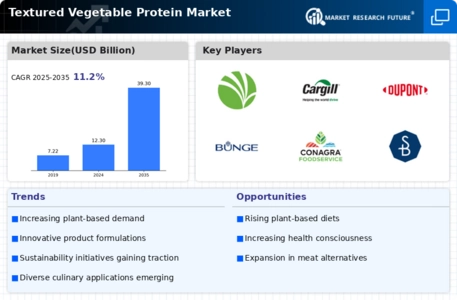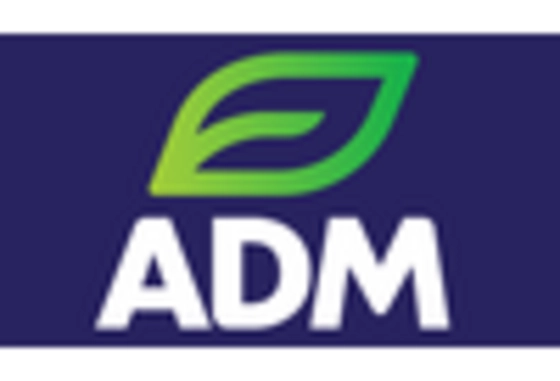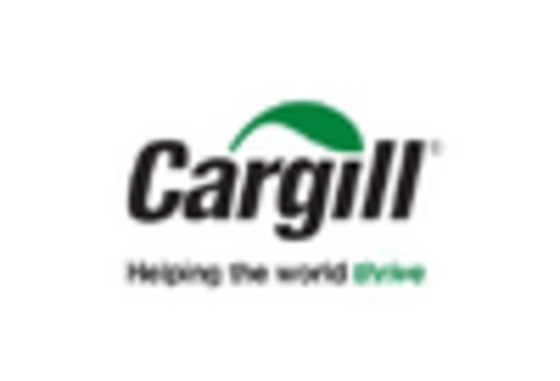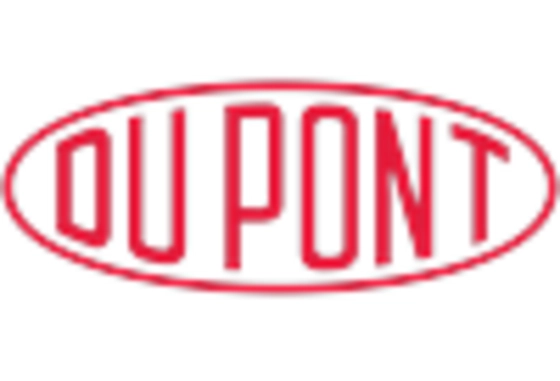Innovation in Food Technology
Advancements in food technology are playing a crucial role in shaping the Textured Vegetable Protein Market. Innovations in processing techniques and product formulations have led to the development of new and improved textured vegetable protein products that mimic the taste and texture of meat more closely. This evolution in product development is likely to attract a wider consumer base, including those who may be hesitant to switch to plant-based diets. The market for textured vegetable protein is projected to reach USD 1.5 billion by 2027, indicating a strong growth trajectory driven by these technological advancements. As companies invest in research and development, the Textured Vegetable Protein Market is poised for significant expansion.
Health Consciousness Among Consumers
The increasing awareness of health and wellness among consumers appears to be a driving force in the Textured Vegetable Protein Market. As individuals seek healthier dietary options, the demand for plant-based proteins has surged. Textured vegetable protein, being low in fat and high in protein, aligns well with the preferences of health-conscious consumers. Reports indicate that the plant-based protein market is projected to grow at a compound annual growth rate of approximately 7.5% over the next few years. This trend suggests that the Textured Vegetable Protein Market is likely to benefit from the shift towards healthier eating habits, as more consumers opt for meat alternatives that offer nutritional benefits without compromising on taste.
Rising Vegan and Vegetarian Population
The growing population of vegans and vegetarians is another significant driver for the Textured Vegetable Protein Market. As more individuals adopt plant-based diets for ethical, environmental, or health reasons, the demand for meat substitutes, including textured vegetable protein, is expected to rise. Recent statistics indicate that the number of people identifying as vegan has increased by over 300% in the last decade. This shift in dietary preferences suggests a robust market potential for textured vegetable protein products, as they provide a versatile and protein-rich alternative to traditional meat products, appealing to a broader audience seeking sustainable food options.
Sustainability and Environmental Awareness
The increasing focus on sustainability and environmental issues is significantly influencing the Textured Vegetable Protein Market. Consumers are becoming more aware of the environmental impact of meat production, leading to a shift towards plant-based alternatives. Textured vegetable protein, being derived from plants, offers a more sustainable option with a lower carbon footprint compared to traditional meat sources. Studies suggest that producing plant-based proteins requires significantly less water and land than animal-based proteins. This growing environmental consciousness among consumers is likely to drive demand for textured vegetable protein products, as individuals seek to make more sustainable food choices that align with their values.
Expansion of Retail and E-commerce Channels
The expansion of retail and e-commerce channels is facilitating greater access to textured vegetable protein products, thereby driving growth in the Textured Vegetable Protein Market. As more consumers turn to online shopping for convenience, the availability of plant-based protein products through various platforms is increasing. This trend is particularly evident in the rise of specialty health food stores and online grocery retailers that cater to the growing demand for plant-based options. Market data indicates that e-commerce sales of plant-based foods are expected to grow by over 20% annually. This accessibility is likely to enhance consumer awareness and adoption of textured vegetable protein, contributing to the overall growth of the market.

















Leave a Comment